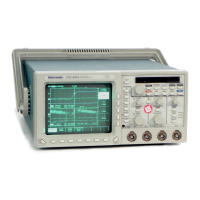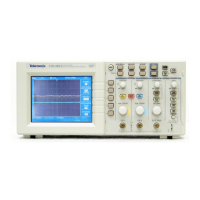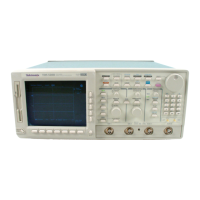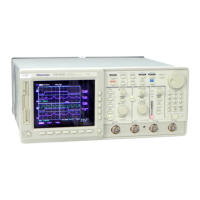Command Descriptions
TDS Family Oscilloscope Programmer Manual
2–239
MOREThan
LESSThan
FALSe
<Space>
?
TRUe
:
MAIn
TRIGger
LOGIc :: PATtern
WHEn
:
TRUe specifies the trigger to occur when the pattern becomes true.
FALSe specifies the trigger to occur when the pattern becomes false.
LESSThan specifies trigger to occur if the specific pattern is true less than the
LESSLimit. (see Figure 2–5 and TRIGger:MAIn:LOGic:PATĆ
tern:WHEn:LESSLimit) Trigger is evaluated at the true-false transition.
MOREThan specifies trigger to occur if the specific pattern is true longer than the
more limit. (see Figure 2–5 and TRIGger:MAIn:LOGic:PATtern:WHEn:MORELiĆ
mit) Trigger is evaluated at the true-false transition.
Specified Pattern
Result
MORELimit LESSLimit
t
o
Figure 2–5: LESSThan and MOREThan Arguments
TRIGger:MAIn:LOGIc:PATtern:WHEn:LESSLimit
TDS 5XXA, 6XXA, & 7XXA Only
Sets or queries the maximum time the selected pattern may be true and still
generate a main logic pattern trigger.
Trigger
TRIGger:MAIn:LOGIc:PATtern:WHEn:LESSLimit <NR3>
TRIGger:MAIn: LOGIc: PATtern: WHEn: LESSLimit?
Arguments
Group
Syntax

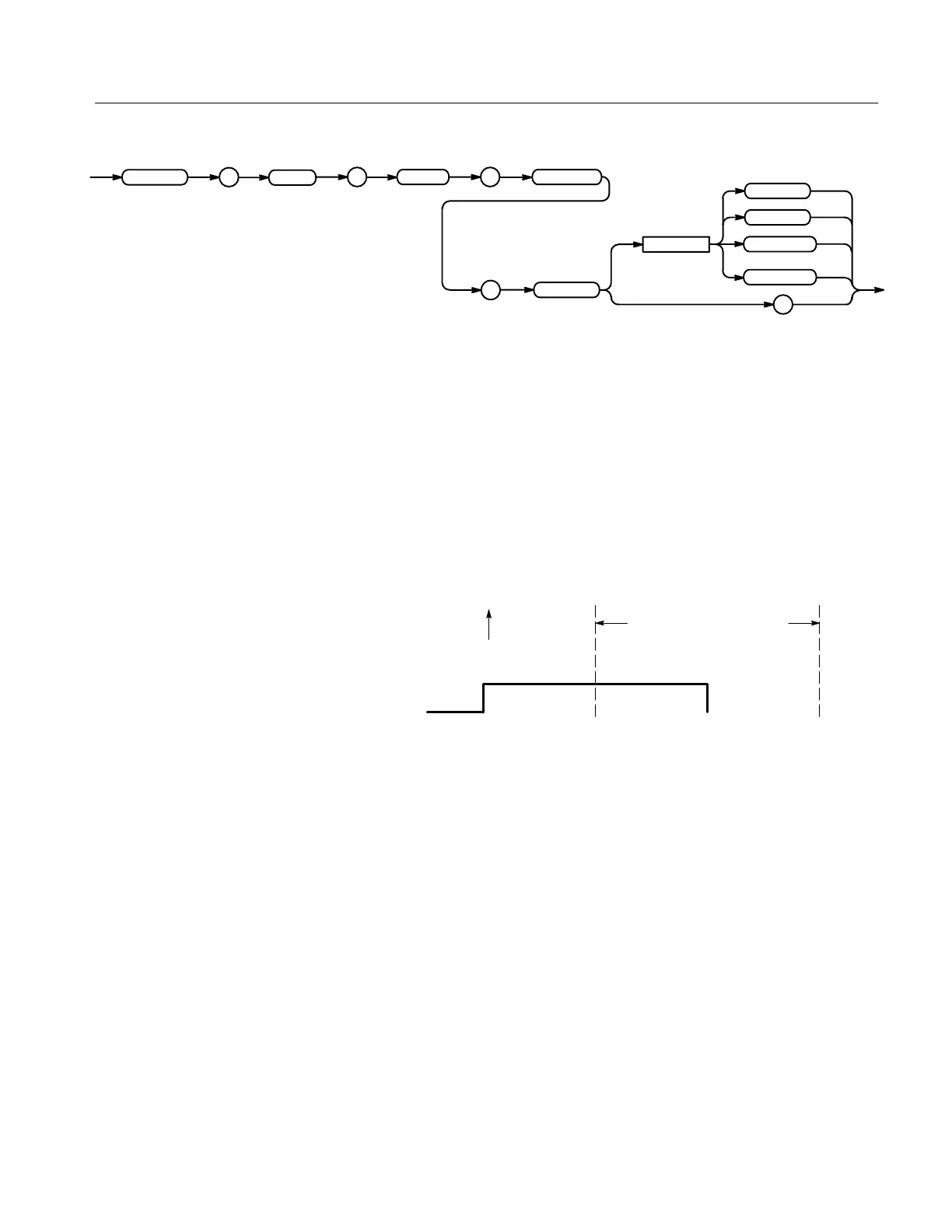